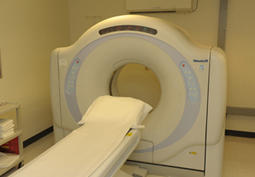When the Pain Doesn’t Allow You to Wait.
 A kidney stone is a hard mass made up of crystals that separate themselves from urine in the urinary tract. Often times these crystals remain so small that they travel through the urinary tract without being noticed. However, sometimes the crystals form stones that are large enough to cause intense pain. It is not always known what causes a stone to form, though genetics and certain diets are believed to impact the chances that someone will develop a kidney stone.
A kidney stone is a hard mass made up of crystals that separate themselves from urine in the urinary tract. Often times these crystals remain so small that they travel through the urinary tract without being noticed. However, sometimes the crystals form stones that are large enough to cause intense pain. It is not always known what causes a stone to form, though genetics and certain diets are believed to impact the chances that someone will develop a kidney stone.
A person who has had more than one kidney stone is likely to form another, so prevention is important. To know what preventative steps can be taken, it is critical that you know what kind of kidney stones you are suffering from. To help determine the cause of your stone, your doctor may order lab tests and X-rays.
Symptoms of Kidney Stones
Kidney stones often do not cause any symptoms prior to the extreme pain that suddenly occurs when a stone moves into the urinary tract and blocks the flow of urine. The sharp, cramping pain may sometimes include nausea and vomiting.
Treating Kidney Stones
When you arrive at our office, we will order either a CT scan or X-ray to verify that you have kidney stones. We do not like to have patients waiting in pain, so we will usually schedule a surgery within the next 24 hours.
However, most kidney stones can eventually be passed through the urinary system. With plenty of fluids to move the stone along, most patients are able to stay at home and wait for the stone to pass. Pain medication can be taken as needed. Sometimes diuretics or cystine reducers are prescribed, depending on the type of stone.
Laser treatment can be used to help eliminate the stones. A scope is inserted into the bladder and ureter. A laser targets the stone(s) that are caught in the ureter and is used to break up the stones so they can be passed more easily through the urinary tract.
Extracorporeal shock wave lithotripsy (ESWL) is the procedure most frequently used in the treatment of kidney stones. Shock waves travel through the skin and tissues until they reach the denser stones. The stones are broken down during this process, so that they can be easily passed through the urinary tract.
Occasionally surgical intervention is necessary if the stone is too large, has damaged vital tissue, is causing infection or has blocked the flow of urine. This surgery is known as a nephrolithotomy procedure. A surgeon will make a small incision in your back to access the kidney. A thin tube is placed into the incision, and a probe is used to fish out the stones.

